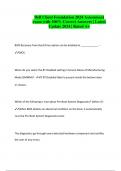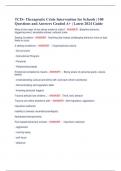Exam (elaborations)
Test Bank - Fundamentals of Musculoskeletal Imaging, 5th Edition (McKinnis, 2021), Chapter 1-18 | All Chapters
Test Bank - Fundamentals of Musculoskeletal Imaging, 5th Edition (McKinnis, 2021), Chapter 1-18 | All Chapters
[Show more]












